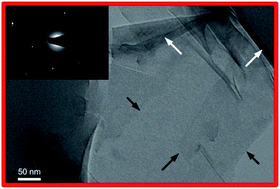From carbon nanotubes and silicate layers to graphene platelets for polymer nanocomposites†
Abstract
In spite of extensive studies conducted on

* Corresponding authors
a
School of Advanced Manufacturing and Mechanical Engineering, University of South Australia, Australia
E-mail:
Jun.Ma@unisa.edu.au
b Department of Energy Application Engineering, Far East University, Tainan City 744, Taiwan
c Mawson Institute, University of South Australia, Australia
d Faculty of Mechanical Engineering and Manufacturing, University of Tun Hussein Onn Malaysia, 86400 Batu Pahat, Malaysia
In spite of extensive studies conducted on

 Please wait while we load your content...
Something went wrong. Try again?
Please wait while we load your content...
Something went wrong. Try again?
I. Zaman, H. Kuan, J. Dai, N. Kawashima, A. Michelmore, A. Sovi, S. Dong, L. Luong and J. Ma, Nanoscale, 2012, 4, 4578 DOI: 10.1039/C2NR30837A
To request permission to reproduce material from this article, please go to the Copyright Clearance Center request page.
If you are an author contributing to an RSC publication, you do not need to request permission provided correct acknowledgement is given.
If you are the author of this article, you do not need to request permission to reproduce figures and diagrams provided correct acknowledgement is given. If you want to reproduce the whole article in a third-party publication (excluding your thesis/dissertation for which permission is not required) please go to the Copyright Clearance Center request page.
Read more about how to correctly acknowledge RSC content.
 Fetching data from CrossRef.
Fetching data from CrossRef.
This may take some time to load.
Loading related content
